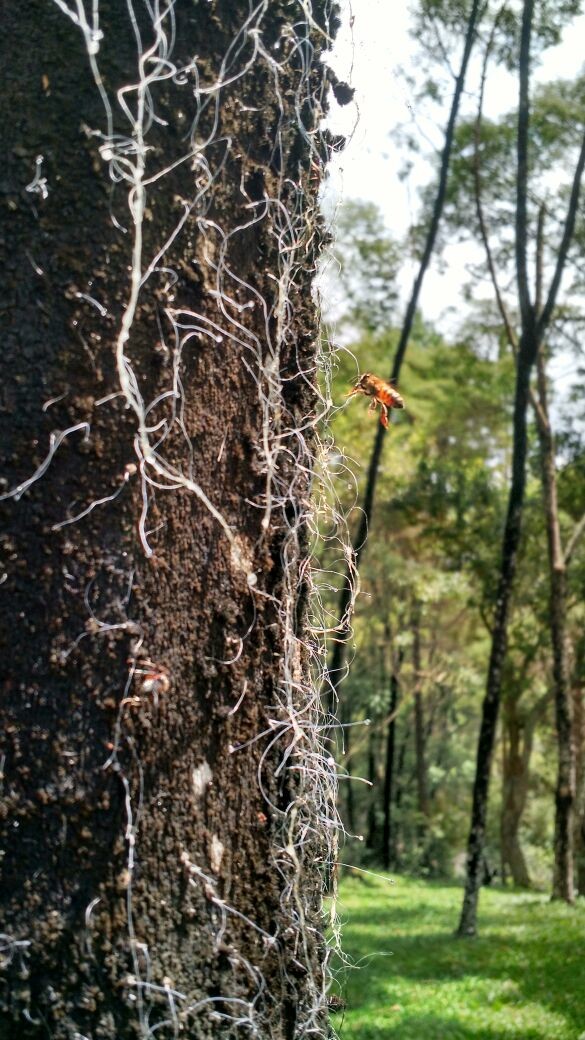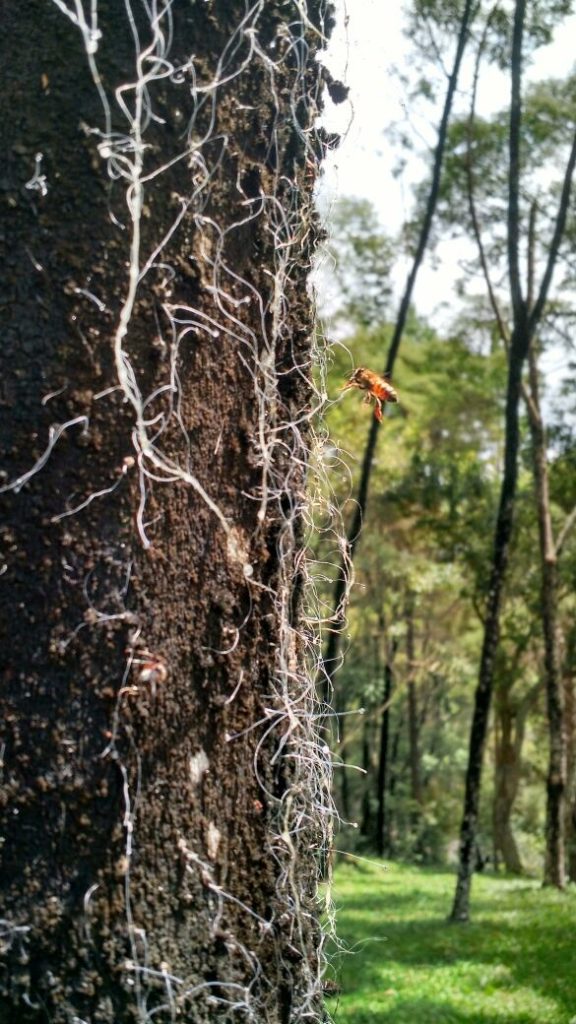
Discover the Melato Honey from Bracatinga
That a large part of honey is produced from the nectar of flowers you probably already knew. But have you ever heard of Melato Melato?
Melato honey from Bracatinga is relatively darker and is the latest bet by researchers studying natural antioxidants at UFSC. It is manufactured by bees from the collection of a sweetened liquid (honeydew) produced by other insects: as cochonilhas. These insects feed on the sap of the Bracatinga tree., a native species from Brazil widely distributed in the southern region. Hence the name of this type of honey!
Every two years these trees are infested with scale insects. This periodicity is given by the life cycle of these insects: in the first semester of even years they form long white threads through which the honeydew is excreted. The honeydew produced by these insects is deposited on the external parts of the plant from where the Apis mellifera bees collect it and use it as a raw material for the production of honey.

Produced in Southern Brazil, recently gained prominence in the news of the beekeeping world. This was due to the registration that the product received as a Geographical Indication (IG) in the Appellation of Origin category (DO) of the Brazilian South Plateau, on Tuesday (20 of June).
This certification (IG) is granted by INPI – National Institute of Industrial Property – and attests that a product has certain characteristics only when it is produced in a unique way., or because it has notoriety in production. The DO classification, on the other hand, assumes that the geographic characteristics of the region where the product is produced determine its uniqueness. The certification covers an area of 134 counties (107 of Santa Catarina, 12 from Paraná and 15 from Rio Grande do Sul).
Differential from honeydew honey
According to studies, the honey in question has different characteristics when compared to floral and honeydew honeys from other origins. This is because in its composition are found enzymes from the salivary glands and intestine of mealy bugs, which probably gives the dark coloration and other unique characteristics.
Besides, Another characteristic of Bracatinga honeydew honey is that it has lower amounts of fructose and glucose, it doesn't crystallize like floral honey.
Sources: https://forbes.com.br/forbesagro/2021/07/conheca-o-mel-que-nao-vem-das-flores-mas-da-arvore-bracatinga/ is https://ciram.epagri.sc.gov.br/index.php/2021/07/21/santa-catarina-conquista-indicacao-geografica-do-mel-de-melato-da-bracatinga/

Sorry, the comment form is closed at this time.